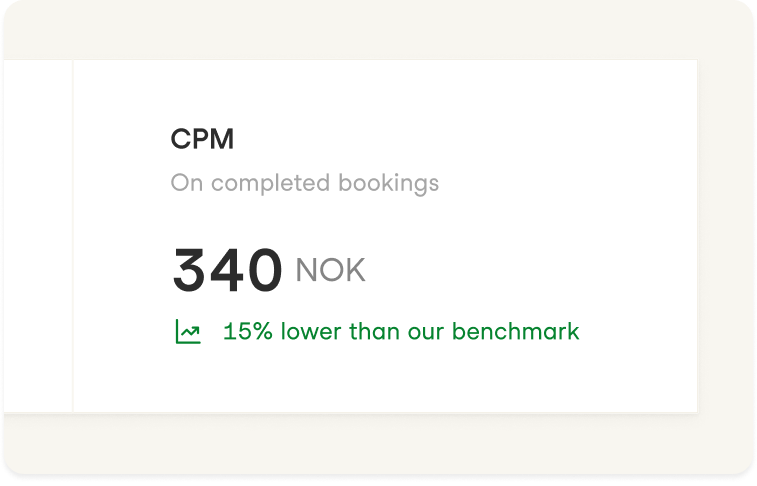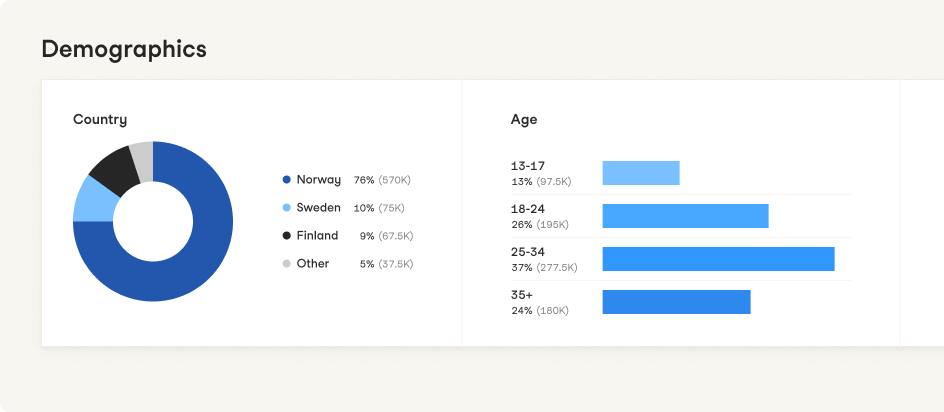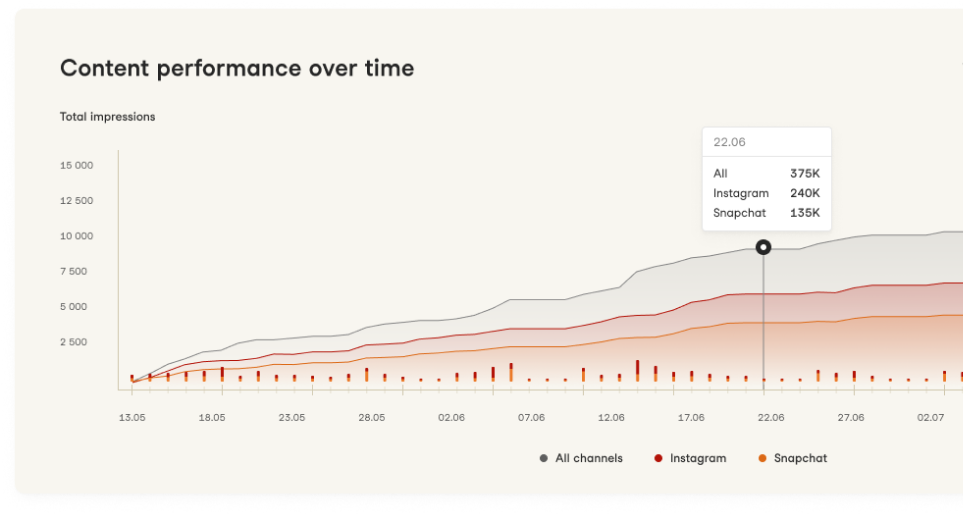
How to Measure Influencer Marketing Effectively
The Most Important Things to Know When Measuring the Success of Influencer Marketing
5 important metrics that are sometimes overlooked
When marketers say that "influencer marketing doesn't work," it’s often because they don’t have clear goals or a good enough understanding of how to track the effect of influencer campaigns. This can quickly lead to wasting budgets.
The good news is that data and analytics within influencer marketing have evolved significantly and now cover much more than just engagements and impressions. Engagement and view counts are still very important, but we now have more detailed metrics and automated methods to define the success of influencer collaborations.
As most marketers are already familiar with engagement rates (user interactions an influencer receives relative to their reach), reach (the number of unique users who see an influencer’s content) and impressions (how many times the content has been viewed), let’s have a look at 5 Key Influencer Marketing Metrics that are sometimes overlooked:
(1) Shares and saves
A high engagement rate indicates an active and interested audience, but it’s important to analyse what drives those interactions. Shares are especially valuable as they extend your content's reach and amplify its effect by having users recommend it to their networks. Saves suggest the audience sees long-term value in the content and can indicate higher purchase intent.
(2) CPM
CPM (Cost Per Thousand Impressions) measures the cost-effectiveness of reaching 1,000 people. A lower CPM means a more efficient use of your marketing budget. However, when tracking CPM and comparing it to other digital activities, it's important to consider that influencers provide more than just exposure. Unlike traditional paid ads, where production costs are separate, influencer campaigns include the time and effort spent creating tailored, creative content suited to different platforms and their audience. This integrated production aspect should be factored in when evaluating CPM, as influencers contribute both high-quality content and personal engagement, which adds value beyond mere impressions.
On inzpire me, you have access to reliable CPM benchmarks based on 20,000 collaborations between influencers and brands.

(3) Video Performance
You can measure specific video metrics across platforms like Instagram, YouTube, TikTok, and Snapchat. Key metrics include the number of plays, replays, and completion rates, helping you see if the content is grabbing attention. Social media platforms share common metrics like total view time and average view time, but they also offer their own unique insights. You can find out more about about the channel-specific metrics here.
(4) Audience Demographics
Understanding the demographics (age, gender, location) of the audience that saw your influencer marketing content ensures it reaches the right people. This metric is vital for targeting specific market segments.

(5) Over Time Performance
Tracking your influencer marketing performance over time is crucial as it shows trends and growth, such as how impressions increase throughout the campaign. This helps identify peak performance periods, assess tactic effectiveness, and make data-driven adjustments to optimise results.

Tracking and measuring these metrics manually often leaves you with scattered data, requiring you to pull information from various sources and influencers. This process can be time-consuming, frustrating, and may not provide the insights you’re looking for.
To measure your influencer campaigns efficiently and accurately, you need access to reliable data that help you understand what’s working and what’s not. Without good data, campaigns are often based on guesswork, which can lead to inefficient budget use. inzpire me offers automated reporting backed by first-party data from all the biggest social media platforms. Learn more about the difference between first-party data and scraped data here, and why it is important.
Automated reporting means you get access to your own dashboard, with all your campaign data in one place, updated in real time. With influencer performance analysis and key insights, you quickly get a clear overview of which influencers are performing, what content works, and which results stand out in your collaborations.
With automated reporting, you can more effectively maximise the ROI of your influencer collaborations, by:
- Comparing multiple campaigns simultaneously: Compare results across influencers and content on different channels, so you can easily optimise for future success.
- Accessing unique insights: View detailed metrics like CPM, engagement, and demographic data to understand how your campaigns are performing and whether you’re reaching your target audience.
- Tracking performance over time: Historical data allows you to spot trends and adjust your strategy based on your results.
- Analysing video content: Metrics like view time, replays, and completion rates give you insights into how your videos are performing across channels like Instagram, Snapchat, TikTok, and YouTube.
- Monitoring results: Filter results by dates, campaigns, and channels to customise reports based on your specific needs.
- Summarising insights: Get summaries of standout results from your campaigns, making it easier to report and share insights with your team (and your boss).
The key reasons to report on influencer campaigns are that it enables you to make data-driven decisions, select the right influencers, and focus on what works best. With your own reporting dashboard on inzpire me, you get the insights needed to do exactly that and maximise your return on investment (ROI).
And remember: Keeping your goals to yourself doesn’t help anyone! Keep the influencers you work with informed about your objectives and expectations, so they’re better equipped to help you achieve the results you’re aiming for.

You may also like

5 Important Influencer Marketing KPIs You Should Track

Measuring Your Influencer Marketing ROI
